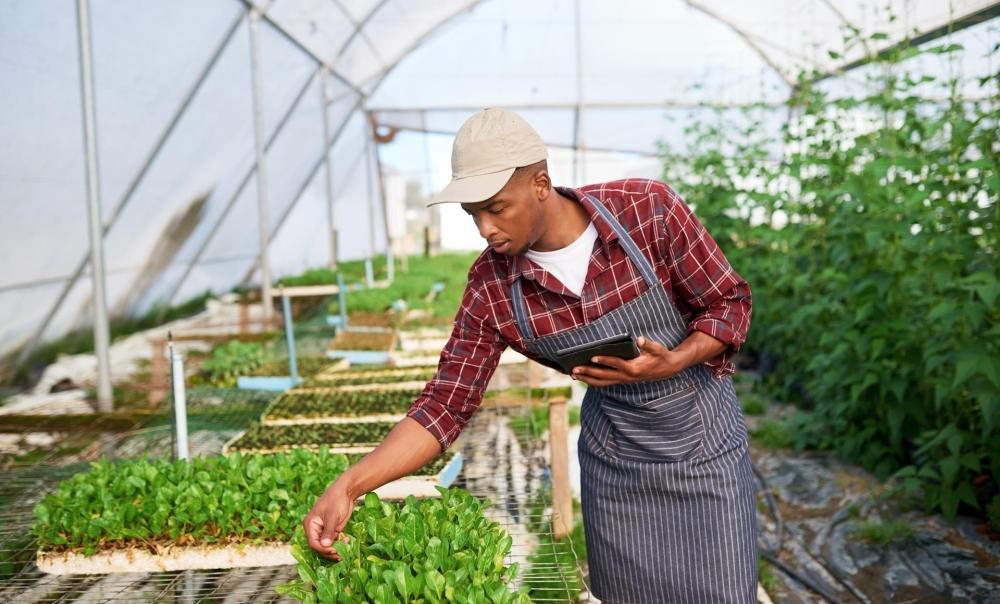Africa-Press – Rwanda. Rwanda is entering a new chapter in its agricultural transformation, one powered not only by improved inputs or infrastructure, but by systems and data. At the heart of this shift is the Agricultural Management Information System (AMIS), a national platform under development as Rwanda’s Digital Public Infrastructure (DPI) for the agriculture sector.
AMIS is more than a system; it is the digital backbone for the country’s smart agriculture future. It is being developed as the single source of truth for the sector, integrating services such as farmer registration, livestock identification, input distribution, veterinary care, production tracking, subsidy administration, insurance, and extension support.
By streamlining fragmented services into a unified platform, AMIS will ensure efficiency, equity, and real-time responsiveness.
Rwanda’s agriculture sector contributes 24.1% of Gross Domestic Product (GDP), employs over 61% of the population, and supports more than 3.3 million smallholder farmers. The livestock sector alone includes 1.4 million cattle, 4.5 million goats, and over 6 million poultry, contributing nearly 13% of agricultural GDP. Yet delivery of services and progress monitoring has remained limited by paper-based records, duplicated databases, and siloed systems.
With more than USD 15 million already mobilised, AMIS is under active construction, financed by the German Development Bank (KfW) through the ICT Facility, the International Fund for Agricultural Development (IFAD) through the Rwanda Dairy Development Project (RDDP) Phase 2, and the World Bank under the Commercialization and De-risking for Agricultural Transformation Project (CDAT). Technical delivery is being coordinated by the Tony Blair Institute for Global Change, under the strategic oversight of the Ministry of Information Communication Technology and Innovation (MINICT) and the Rwanda Information Society Authority (RISA).
Beginning in July 2025, AMIS will launch its livestock digitalisation component, starting with the tagging and registration of over one million cattle. Each animal will receive a unique digital ID and health card, logging key life events such as birth, vaccinations, breeding, treatment, and sale. To support this, approximately 5,000 public and private veterinarians will be equipped with tablets, enabling them to register livestock, manage licensing, and deliver services directly through AMIS. This is made possible in part through the World Bank’s Rwanda Digital Acceleration Project.
Livestock owners will gain secure digital proof of ownership and access to formal services such as veterinary care, insurance, input programmes, and loans.
The government will gain tools for disease surveillance, movement control, and export traceability. Financial institutions and insurers will access verified livestock histories to reduce risk and unlock investment.
AMIS is designed for scale and innovation. Through open Application Programming Interfaces (APIs), it will allow banks, private sector, agribusinesses, cooperatives, insurance providers, and startups to connect securely. These private actors will be able to build new products such as credit, insurance and input financing using real-time, verified production data.
But AMIS is not only a tool for service delivery, it is a platform for national policy and investment planning. A key feature of AMIS will be interactive policy dashboards that allow government institutions and districts to monitor programme reach, track extension coverage, validate subsidy targeting, and respond to emerging needs. These dashboards will enable evidence-based decisions around budget allocation, strategic investments, and prioritisation of services, particularly for youth and women farmers.
AMIS is also designed to work with emerging innovations. It will integrate with the AI-powered voice enabled agricultural chatbot, now being embedded in the National Agriculture Call Centre (toll-free 4127), enabling the chatbot to access verified farmer and livestock profiles to offer personalised advice, referrals, and follow-ups. Satellite imagery and remote sensing will be layered into the system for agricultural monitoring, yield forecasting, climate alerts, and geo-referenced planning.
Crucially, AMIS is being built with institutional integrity and sustainability in mind. A national Digitalization Steering Committee has been established to provide governance and cross-sector coordination. The committee brings together oversight from the Ministry of Information Communication Technology and Innovation, the Rwanda Information Society Authority, the Rwanda Agriculture and Animal Resources Development Board, the Ministry of Agriculture and Animal Resources, the National Agricultural Export Development Board, the Rwanda Space Agency, and the Rwanda ICT Chamber.
With support from CENFRI, a comprehensive data strategy has already been completed, and a national data governance framework is under development to ensure security, quality, and responsible use of agricultural data. With GIZ support data-sharing protocols and interoperability standards are being established to ease data sharing and strengthen accessibility. A sustainability model is being finalised to manage long-term system upkeep, ease data-sharing agreements, and encourage innovation while maintaining data sovereignty, through GIZ support.
AMIS is inclusive by design. While accessible on smartphones and web interfaces, it is also compatible with USSD and SMS to ensure access for the 70%+ of farmers still using basic phones. Farmers will be able to view their records, receive SMS alerts, validate service delivery, and access advisories in real time, closing the gap between service providers and beneficiaries. The system also enables gender and youth-disaggregated tracking, so that public investments and development programmes can be aligned with national equity and inclusion goals.
As Rwanda becomes increasingly climate-sensitive, data-dependent, and export-oriented, AMIS represents a strategic shift, from fragmented interventions to an integrated, digital-first approach. It is not just another short-term solution or a donor-funded pilot. It is a national infrastructure, long-term, government-led, and future-proof. It enables the government to deliver agricultural services with speed, equity, and precision empowers the private sector to innovate, scale, and invest with confidence; establishing Rwanda as a leader in technologically driven agricultural transformation. It gives farmers control, visibility, and access to opportunity. With AMIS, Rwanda is not just digitising agriculture—it is building the infrastructure to transform it.
This article is co-authored by Dr Lilian Ndungu (Ag-Tech Advisor, Tony Blair Institute for Global Change), Martine Nezerwa (Chief Digital Officer, Ministry of Agriculture and Animal Resources), and Anthony Kagotho Kamau (Senior Ag-Tech Advisor, Tony Blair Institute for Global Change).
For More News And Analysis About Rwanda Follow Africa-Press






